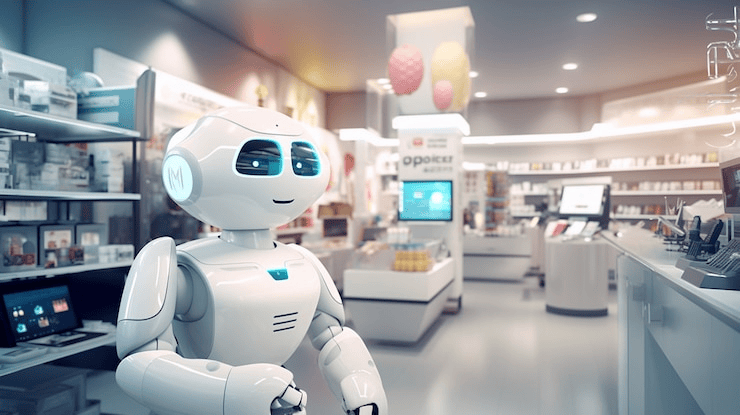In today’s fast-paced healthcare environment, pharmacies are expected to deliver accurate prescriptions quickly and efficiently. As the volume of patients increases and medication regimens become more complex, the margin for error narrows. To meet these growing demands, Pharmacy Technology has emerged as a transformative force, redefining how modern pharmacies operate. Among its many innovations, automation in pharmacies plays a central role in enhancing both the accuracy and speed of pharmacy services.
From minimizing human error to streamlining the prescription fulfillment process, automation is no longer a luxury—it’s a necessity. Let’s explore how automation reshapes pharmacy operations, helping healthcare professionals offer safer, faster, and more reliable services to patients.
The Need for Automation in Today’s Pharmacies
Traditional pharmacy practices often involve manual counting, sorting, labeling, and record-keeping. While pharmacists and technicians are highly skilled, human error is inevitable, especially in high-pressure environments. Missed dosages, incorrect labeling, and time-consuming workflows can lead to delays or even serious medical complications.
This is where Pharmacy Automation becomes critical. Automation systems are designed to handle repetitive tasks with greater precision and reliability. These systems not only support pharmacy staff in reducing errors but also allow them to spend more time on patient-focused services.
By integrating Pharmacy Automation technologies such as robotic dispensing units, barcode verification, and digital record management, pharmacies are significantly improving their operational efficiency.
How Automation Enhances Accuracy
Accuracy in medication dispensing is paramount to patient safety. A single error can have serious consequences. Automation helps reduce such risks in multiple ways:
1. Barcode Scanning and Verification
Automated systems rely on barcode scanning to verify prescriptions, patient information, and medications. This minimizes the chances of selecting the wrong drug or dosage. These verifications happen in real-time, adding an extra layer of safety to the dispensing process.
2. Robotic Dispensing Units
Robotic systems used in Pharmacy Technology are programmed to handle high volumes of prescriptions with minimal error. These robots count pills, fill vials, label them, and even cap them—all under precise control. This automation not only reduces human error but also standardizes the dispensing process.
3. Error Tracking and Alerts
Modern automation systems include built-in alerts for potential errors. Whether it’s a drug interaction or a duplicate medication, the system can flag issues before they reach the patient. These alerts help pharmacists make better-informed decisions quickly and confidently.
Speed and Efficiency: The Competitive Edge
Accuracy alone isn’t enough in a modern pharmacy. Speed and efficiency are equally important, especially when handling hundreds or even thousands of prescriptions daily. Here’s how automation boosts speed without compromising quality:
1. Streamlined Workflow
Automated pharmacy systems connect multiple processes—from prescription intake to inventory management—creating a seamless workflow. Tasks that once took several minutes now take seconds, allowing staff to focus on higher-value responsibilities.
2. Real-Time Inventory Management
Automation keeps track of stock levels and expiry dates in real time, ensuring that medications are always available and up to date. This significantly reduces downtime caused by manual checks and stock shortages.
3. Faster Prescription Fulfillment
With robotic dispensers and automated labeling systems, pharmacies can fulfill prescriptions faster than ever. This means shorter wait times for patients and more efficient daily operations for staff.
The Role of Pharmaceutical Technology in Modern Pharmacies
As automation continues to evolve, it is deeply intertwined with Pharmaceutical Technology—a field that encompasses everything from digital pill tracking to advanced drug manufacturing. By adopting innovative Pharmaceutical Technology, pharmacies can deliver higher standards of care and stay compliant with industry regulations.
These technologies also support remote consultations, digital prescription transfers, and real-time data sharing with healthcare providers, making pharmacy services more integrated and patient-centered.
Real-World Impact: What Pharmacies Are Experiencing
Pharmacies that have embraced automation report significant improvements in their daily operations. For example, some hospitals using robotic dispensing systems have reduced medication errors by up to 85%. Community pharmacies equipped with digital prescription systems are processing up to 50% more prescriptions without increasing staff size.
The return on investment is evident—not only in financial terms but also in customer satisfaction and staff retention. Automation allows pharmacists to reclaim valuable time, which they can dedicate to advising patients, managing chronic care, or offering immunization services.
Challenges and Considerations
While the benefits of automation are clear, it’s essential to approach implementation thoughtfully. Cost, training, and system integration can be significant hurdles. Choosing the right automation tools, ensuring proper onboarding, and aligning the new systems with current workflows are all crucial steps.
Fortunately, working with an experienced partner can simplify this transition. A trusted AI Automation Agency can guide pharmacies through the planning, setup, and optimization phases to ensure successful implementation. They help tailor automation solutions that meet specific needs while staying within budget.
Future Trends in Pharmacy Technology
The future of Pharmacy Technology is bright, with ongoing advancements in AI, machine learning, and the Internet of Things (IoT). Predictive analytics will soon help pharmacies anticipate demand, identify medication trends, and enhance supply chain efficiency.
Meanwhile, smart wearables and digital therapeutics will likely integrate with pharmacy systems, enabling real-time monitoring of patients’ medication adherence. As Pharmaceutical Technology continues to advance, it will further blur the lines between pharmacy and digital healthcare.
Conclusion: Embracing Automation for a Better Pharmacy Experience
Automation is no longer just about machines replacing manual tasks—it’s about creating a smarter, safer, and more responsive pharmacy environment. With improved accuracy and speed, pharmacies can deliver better outcomes, reduce errors, and build stronger relationships with their patients.
By adopting the latest Pharmacy Technology and embracing the power of Pharmaceutical Technology, pharmacies can position themselves for long-term success. Whether you’re a small community pharmacy or a large hospital network, automation offers a path to greater efficiency and better care.









